
90+ Rock Formations For Fantasy Worldbuilding44 min read
Bedrock, boulders, and balanced rocks! Welcome back, Outlander, to the 14th entry in Mythic Ecology, my series on how learning real-world landscape features can enrich our fantasy worldbuilding and storytelling. In this post I return to my minimalist framework for Dungeon Masters, Game Masters, fiction writers, and similar worldbuilders to merge the realms of general myth and geomorphology. Last entry I took a look at the Deep Sea. As I resume my journey sketching a framework for designing Yridia, my unique D&D 5e fantasy world, let’s learn some rock formations, with a visual guide!
Note: to avoid redundancy, in this installment I’ve skipped over most of the rock megastructures in my Mountains entry, and the subterranean rock structures in my Caves post. You may still wish to check those out.
All the images herein I use for educational and entertainment purposes, I claim no rights to any of them. For corrections or content removal requests, hit my contact page.
Part 0: Mythic Ecology For Fantasy Worldbuilding & Storytelling
-Settlements
-Omens
-Overlooks
-Passageways
-Abyss
-Battlegrounds
Part 1: Rock Formation
-Rock Formation
Part 2: Sedimentary Rock 101
-Sedimentary Rock
–Clastic Texture
–Bioclastic Texture
–Microclastic Texture
–Crystalline Texture
–Microcrystalline Texture
–Fossiliferous Texture
Part 3: Igneous Rock 101
-Igneous Rock
–Aphanitic Texture
–Glassy Texture
–Pegmatitic Texture
–Phaneritic Texture
–Porphyritic Texture
–Pyroclastic Texture
Part 4: Metamorphic Rock 101
-Metamorphic Rock
–Gneissose Texture
–Granoblatic Texture
–Hornfelsic Texture
–Schistose Texture
–Slaty Texture
Part 5: Bedrock, Exposures, Outcrops
-Bedrock
-Rock Exposure
-Rock Outcrop
Part 6: Ore Deposits, Shears, Veins
-Ore Deposits
-Shears
-Veins
Part 7: Mesostructures
-Batholith
-Hornito
-Nunatak / Glacial Island
-Tor / Castle Koppie / Kopje
Part 8: Fins, Arches, Tunnels, Windows
-Fins
-Arch
-Double-Arch Complex
-Sea Arch
-Tunnel Rock
-Window Rock
Part 9: Hoodoos
-Hoodoo / Tent Rock / Fairy Chimney / Earth Pyramid
–Fairy Chimney
–Hoodoo Amphitheater
–Mushroom Rock / Pedestal Rock / Gour
–Tea Table
–Ventifact
–Yardang
Part 10: Bonus Pillars, Spires, Towers
-Rock Pillars
–Rock Pillar Clusters
–Rock Pillar Fields
-Spire
–Spire Clusters
–Spire Fields
-Stone Colonnade
-Stone Tower
–Stone Tower Clusters
–Stone Tower Fields
–Stone Tower Karst
Part 11: Balanced Rocks
-Balancing Rocks / Precarious Boulder
–Balancing Erratics / Rocking Stones / Logans
–Boulder Bridge
–Erosional Remnant
—Hat Rock
–Glacial Erratic
–Perched Block
Part 12: Boulders & Domes
-Bornhardt
-Cleft Boulder
-Cupola
-Half-Dome
-Hollow Boulder
-Sphere Boulders
Part 13: Rock Slopes
-Ball and Pillow Structures
-Chevron Folds
-Columnar Joints
-Flared Slope
-Mineral Terrace
-Rainbow Sandstone
Part 14: Rock Expanses
-Desert Pavement / Reg / Serir / Gibber / Sai
-Desert Varnish / Rock Rust / Desert Patina
-Limestone Pavement / Alvars
-Mudcracks / Dessication Cracks
-Raindrop Impressions
-Tessellated Pavement
-Wavecut Platform / Shore Platform / Coastal Bench
Part 15: Rock Intrusions
-Cone Sheet
-Dike
–Ring Dike
-Roof Pendant
-Sill
Part 16: Look-Alikes
-Anthropomorphic Rock
-Botanomorphic Rock
-Zoomorphic Rock
-Cobblestone Rocks
-Lighthouse Rock
-Organ Pipe Rocks
-Stairway Rocks
PART 0: MYTHIC ECOLOGY FOR FANTASY WORLDBUILDING & STORYTELLING
Let’s revisit my minimalist framework for my worldbuilding. The six archetype tags with which I will flag all the various real-world land features in my Mythic Ecology Series:
1. Settlements: habitable regions of either Work or Play, Familiar or Exotic, offering diverse narrative functions: a Day in the Life, Home Base, Personal Reasons, Gathering Supplies. Can subvert tropes with Ruins or Escape.
2. Omens: sensational, temporal, or particularly pointed features that offer narrative functions of forshadowing, and good or evil portents. Can subvert tropes with a Wild Goose Chase.
3. Overlooks: sites of magnitude and grandeur, living monuments which can function narratively for finding resolve, invoking spirits, or as a Call to Adventure. Can subvert tropes with Dread or Betrayal.
4. Passageways: transitional journeylands, including magical portals, functioning narratively for initiation and return, thresholds and tests, shortcuts and setbacks.
5. Abyss: a void or confined space presenting scarcity or temptation, desperation and danger. Can subvert tropes with a Timely Rescue or Secret Refuge.
6. Battlegrounds: sites fit for epic, sprawling encounters and climax conflicts. Can subvert tropes with Alternative Solutions.
Feel free to submit your own ideas, or draw outside the lines. Alright, let’s see how rock formations fit in.
PART 1: ROCK FORMATION

Rock Formation – an isolated, scenic, or spectacular surface rock outcrop, sculpted from weathering or erosion.
[Settlements, Omens, Overlooks, Passageways, Abyss, Battlegrounds]
PART 2: SEDIMENTARY ROCK 101

Sedimentary Rock – rock formed through gradual accumulation and compaction of sediments like sand or mud via water and wind action; exposed via erosion. Includes clastic sedimentary rocks like gravel conglomerates, sandstones, and mudrocks, plus biochemical ones like limestone and coal and chert, as well as chemical ones like rock salt and gypsum.
[Omens]

Clastic Texture – a porous and not very dense texture, where grains and fragments do not interlock, instead being piled together and cemented. Fragments visible to the naked eye. Example: arkose sandstone, quartz sandstone, and mudstone.
[Omens]

Bioclastic Texture – a porous and not very dense texture, where grains and fragments do not interlock, instead being piled together and cemented, and all grains or fragments are fossils. Fragments visible to the naked eye. Example: cloudina shells and limestone rock.
[Omens]

Microclastic Texture – a porous and not very dense texture, where grains and fragments do not interlock, instead being piled together and cemented. Example: shale.
[Omens]

Crystalline Texture – an interlocking network of visible crystals, typically of one mineral throughout. Example: rock salt and travertine.
[Omens]

Microcrystalline Texture – an interlocking network of crystals not visible to the naked eye, typically of one mineral throughout. Dense and nonporous, breaking with conchoidal fractures. Example: chert and hematite.
[Omens]

Fossiliferous Texture – a rock displaying an abundance of fossils. Mixes with other sedimentary texture types. Example: fossiliferous limestone.
[Omens]
PART 3: IGNEOUS ROCK 101

Igneous Rock – rock formed through cooling and crystallization of melt or magma. Includes plutons (subsurface magma crystallization) and volcanic extrusives (lava, pyroclastics, volcanic ash i.e tuff).
[Omens]

Aphanitic Texture – a rock texture from rapid crystallization of lava, forming fine crystals which cannot be seen. Example: andesite, basalt, and rhyolite.
[Omens]

Glassy Texture – forms when lava from a volcanic eruption rapidly cools, resulting in an amorphous glass with little or no crystals. Example: obsidian and pumice.
[Omens]

Pegmatitic Texture – formed when magma cools and some minerals expand dramatically. Example: pegmatite.
[Omens]

Phaneritic Texture – formed under slow crystallization beneath the planet’s surface, creating large, visible crystals. Seen in plutonic igneous rocks. Example: diorite, gabbro, and granite.
[Omens]

Porphyritic Texture – caused by the rapid change of conditions as magma cools, where a fine-grained matrix encloses several large crystals following uneven melts, or else when a volcano eruption disrupts the magma crystallization process. Example: andesite and granite.
[Omens]

Pyroclastic Texture – formed when volcanic eruptions expel lava into the atmosphere, creating fragmente, glassy materials. Example: lapilli, volcanic ash, volcanic bombs.
[Omens]
PART 4: METAMORPHIC ROCK 101

Metamorphic Rock – rock transformed into another rock type via heat, pressure, or chemical change, with a new composition and fabric.
[Omens]

Gneissose Texture – a coarsely foliated texture where minerals segregate into thin, discontinuous parts, each dominated by one or two minerals, giving a striped appearance. Example: gneiss.
[Omens]

Granoblastic Texture – an equigranular texture in which crystals adopt a polygonal morphology with grain triple junctions, which minimizes the combined surface energy of phases within a rock. Example: granulite, marble, and quartzite.
[Omens]

Hornfelsic Texture – a fine-grained texture of interlocking grains of varying shape and size, caused by thermal recrystallization. Example: hornfels and skarn.
[Omens]

Schistose Texture – a foliated texture resulting from the roughly parallel orientation of minerals like chlorite or micas. Between the parallelism of phyllite and the banding of gneiss. Example: schist.
[Omens]

Slaty Texture – characterized by separation along parallel planes. Caused by the parallel orientation of microscopic grains. Example: slate, phyllite.
[Omens]
PART 5: BEDROCK, EXPOSURES, OUTCROPS

Bedrock – solidified rock laying under loose, softer material, called regolith, within the surface of the planet’s crust.
[Settlements, Omens, Battlegrounds]

Rock Exposure – a visible exposure of bedrock looking uncovered from subsurface material; can look chiseled, and either protrusive, flat, or concave.
[Settlements, Omens, Overlooks]

Rock Outcrop – a visible exposure of bedrock, usually rounded and protrusive, arising where erosion rapidly exceeds weathering, especially from denudation. Often arises at steep hillsides, mountain ridges and tops, river banks, tectonically active areas, and excavations. Whereas cliffs have a continuous line along the top edge with lines protruding down, these have a continuous line around each area of bare rock.
[Settlements, Omens, Overlooks]
PART 6: ORE DEPOSITS, SHEARS, VEINS

Ore Deposits – natural occurrences of rock or sediment bearing valuable densities of minerals or metals. Often found in Veins and Shears.
[Omens]

Shears – rock deformations by compressive stress forming linear textures, often homogenous. In brittle rocks, this results from fracturing and faulting, whereas in ductile rocks it can arise from the growth of sub-grain boundaries or by lattice glide. Can create openings for Ore Deposits.
[Omens, Passageways]

- Veins – distinct sheetlike bodies of crystallized minerals within a rock. Formed by deposition of mineral constituents carried by water within a rock mass, via crystal growth. May host Ore Deposits.
[Omens, Passageways]
PART 7: MESOSTRUCTURES

Batholith – a large mass of intrusive igneous rock, forming from cooled magma.
[Omens, Overlooks]
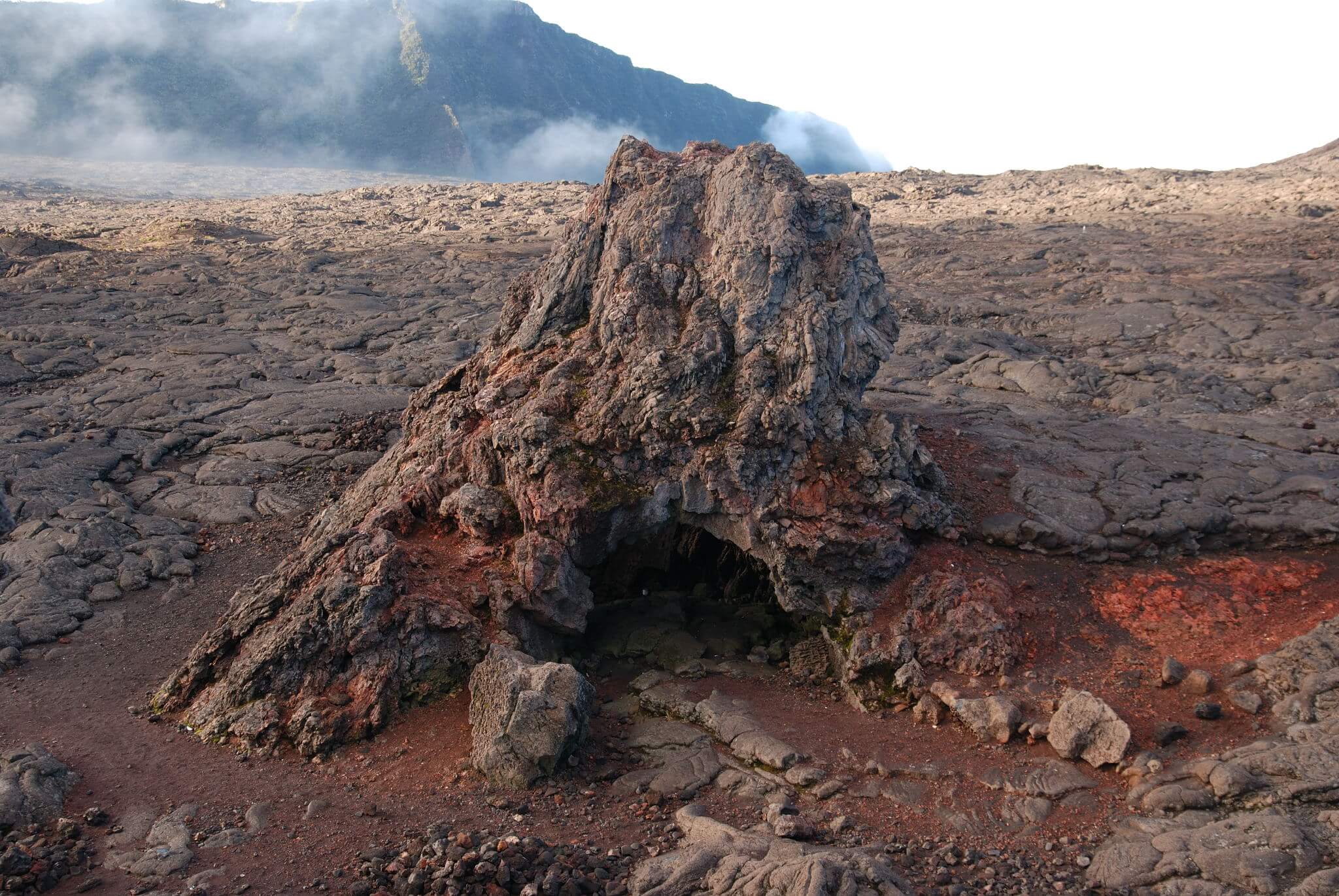
Hornito – conical structures built up by lava ejected through an opening in the crust of a lava flow.
[Omens, Passageway]

Nunatak / Glacial Island – exposed, often rocky element of a ridge, mountain, or peak not covered with ice or snow within an ice field or glacier. “Rognon” refers to a smaller one rounded by glacial action.
[Omens, Overlooks]

Tor / Castle Koppie / Kopje – a large, freestanding rock outcrop rising abruptly from the surrounding smooth and gentle slopes of a rounded hill summit or ridge crest. Sometimes refers to the hill itself.
[Omens, Overlooks]
PART 8: FINS, ARCHES, TUNNELS, WINDOWS

Over time, edges of megastructures like buttes, mesas, and plateaus can wear down, producing facets like fins, which can wear down further, developing into arches or tunnels or windows, and later on potentially hoodoos or pillars of other sorts as well.


Fins – rock formations comprised of narrow, residual walls of hard sedimentary rock which remain standing after surrounding rock has eroded away along parallel joints or fractures. Formed when a narrow butte or plateau develops many vertical, parallel cracks, due to water erosion or differential weathering. Often an intermediary step toward further deformations.
[Settlements, Omens, Overlooks, Passageways, Abyss, Battlegrounds]

- Arch – a natural rock arch or bridge with an opening underneath, formed by differential erosion or weathering of cliffs, fins, or stacks.
[Omens, Overlooks, Passageways]

- Double-Arch Complex – a natural double-arch structure.
[Settlements, Omens, Overlooks, Passageways]

- Sea Arch – a rock arch or bridge formed with an opening underneath, formed by differential erosion or weathering of cliffs, fins, or stacks.
[Omens, Overlooks, Passageways]

- Tunnel Rock – a rock structure with a narrow, natural tunnel running through its mass.
[Omens, Overlooks, Passageways, Abyss]

- Window Rock – a rock structure with a gap functioning as a crude window.
[Omens, Overlooks, Passageways]
PART 9: HOODOOS

- Hoodoo / Tent Rock / Fairy Chimney / Earth Pyramid – a tall, thin pillar of rock protruding from the bottom of an arid drainage basin or badland, usually topped by harder rock and having varying thicknesses along its height.
[Omens, Overlooks, Abyss]

- Fairy Chimney – a hoodoo formed when volcanic eruptions rain ash which hardens into tuff, a porous rock, then covered by a layer of basalt; the softer tuff gradually erodes, leaving the harder basalt capstone behind.
[Omens, Overlooks, Abyss]

- Hoodoo Amphitheater – a large limestone amphitheater comprised of many clustered hoodoos, with distinct red, orange, and white colors, caused by wind and water erosion.
[Settlements, Omens, Overlooks, Passageways, Abyss, Battlegrounds]

- Mushroom Rock / Pedestal Rock / Gour – a mushroom-shaped rock forming from differential wind erosion and weathering. Related to Ventifact.
[Omens, Overlooks, Abyss]

- Tea Table – a type of rock pillar bearing discrete layers, usually of sedimentary rock, with the top layers wider than the base. Essentially a flat-top, table-like hoodoo.
[Omens, Overlooks, Abyss]

- Ventifact – a stone or bedrock surface shaped or eroded by wind, whether abraded, pitted, etched, grooved, or polished.
[Omens, Overlooks, Abyss]

- Yardang – a streamlined, wind-formed ridge exposed down to the bedrock, which can have sandblasted hollows within it. Related to Ventifact.
[Omens, Overlooks, Abyss]
PART 10: BONUS PILLARS, SPIRES, TOWERS

- Rock Pillars – natural structures of upright stone, typically detached.
[Omens, Overlooks]

- Rock Pillar Clusters – a group of vertical stone structures, potentially partially-connected. Often made of limestone, marlstone, dolomite, or slate.
[Settlements, Omens, Overlooks, Passageways]

- Rock Pillar Fields – a group of vertical stone structures, potentially partially-connected, set in a wide horizontal array. Often made of limestone, marlstone, dolomite, or slate.
[Settlements, Omens, Overlooks, Passageways, Abyss, Battlegrounds]

- Spire – a rock pillar which tapers toward the top, typically detached.
[Omens, Overlooks]

- Spire Clusters – groups of close-together or partially-connected rock pillars which taper toward the top.
[Settlements, Omens, Overlooks, Passageways]

- Spire Fields – groups of close-together or partially-connected rock pillars which taper toward the top, set in a wide horizontal array. Often associated with volcanic peaks.
[Settlements, Omens, Overlooks, Passageways, Abyss, Battlegrounds]

- Stone Colonnade – groups of vertical, weight-bearing rock columns attached to an overheard surface.
[Settlements, Omens, Overlooks, Abyss, Battlegrounds]

- Stone Tower – a singular, very tall rock pillar, typically detached.
[Omens, Overlooks]

- Stone Tower Clusters – groups of very tall rock pillars, somewhat close together or partially-connected.
[Settlements, Omens, Overlooks, Passageways]
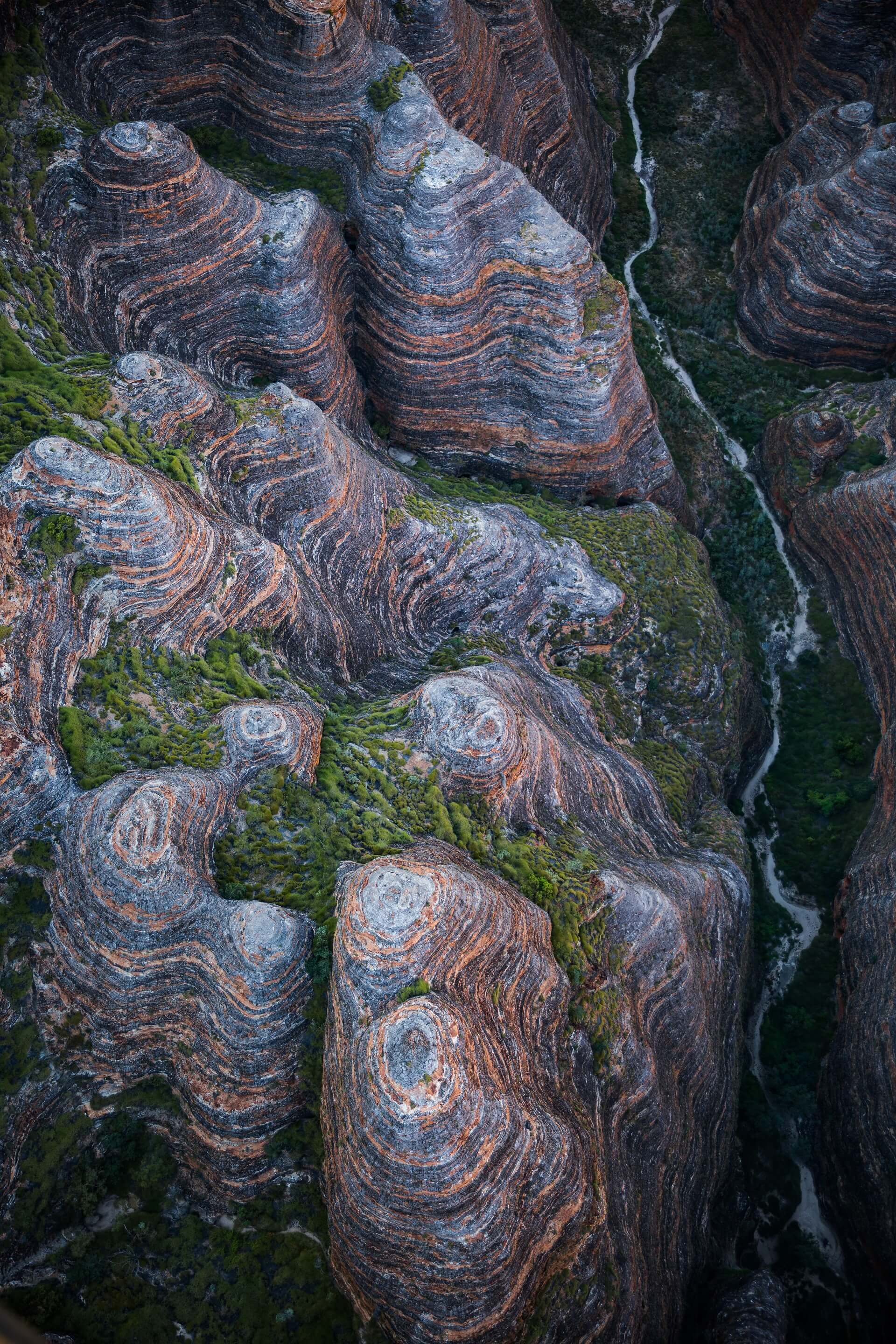
- Stone Tower Fields – groups of very tall rock pillars, somewhat close together or partially-connected, set in a wide horizontal array. Typically beehive-shaped, and made of sandstone plus rock conglomerates.
[Settlements, Omens, Overlooks, Passageways, Abyss, Battlegrounds]

- Stone Tower Karst – tall rock structures composed of soluble rock, formed as near-vertical joints and fractures erode downward, isolating rock mass.
[Omens, Overlooks]
PART 11: BALANCED ROCKS

- Balancing Rocks / Precarious Boulder – a large rock or boulder, sometimes of substantial size, resting on other rocks, bedrock, or on glacial till.
[Omens, Overlooks]

- Balancing Erratics / Rocking Stones / Logans – a boulder transported and deposited by glaciers or ice rafts and precariously balanced in a resting place on soil, bedrock, or other boulders, usually with a contrasting structure or appearance to nearby rock.
[Omens, Overlooks]

- Boulder Bridge – a natural bridge comprised of balanced boulders, often from rockfall.
[Omens, Overlooks, Passageways, Abyss]

- Erosional Remnant – a persisting rock formation remaining after extensive wind, water, or chemical erosion, carved from local bedrock instead of arising from glacial transportation.
[Omens, Overlooks]

- Hat Rock – an erosional remnant shaped like a flat disc.
[Omens, Overlooks]

- Glacial Erratic – a piece of rock differing in size and native type from the area it rests, carried by glacial ice.
[Omens]

- Perched Block – a large, detached rock fragment transported to a resting place, typically a bedrock pedestal on a hill or slope, by glacial action, rockfalls, landslides, or avalanches.
[Omens]
PART 12: BOULDERS & DOMES

Bornhardt – a dome-shaped, steep-sided, bald rock outcropping. Subset of inselberg.
[Omens, Overlooks]

Cleft Boulder – a boulder split down the middle by freeze-thaw action.
[Omens, Passageways]

Cupola – a dome-shaped projection from the top of a large subterranean intrusion.
[Omens, Overlooks]

- Half-Dome – a granite formation where one side resembles a dome. Formed by weathering, such as freeze-thaw action, along joints in the rock mass.
[Settlements, Omens, Overlooks, Abyss]
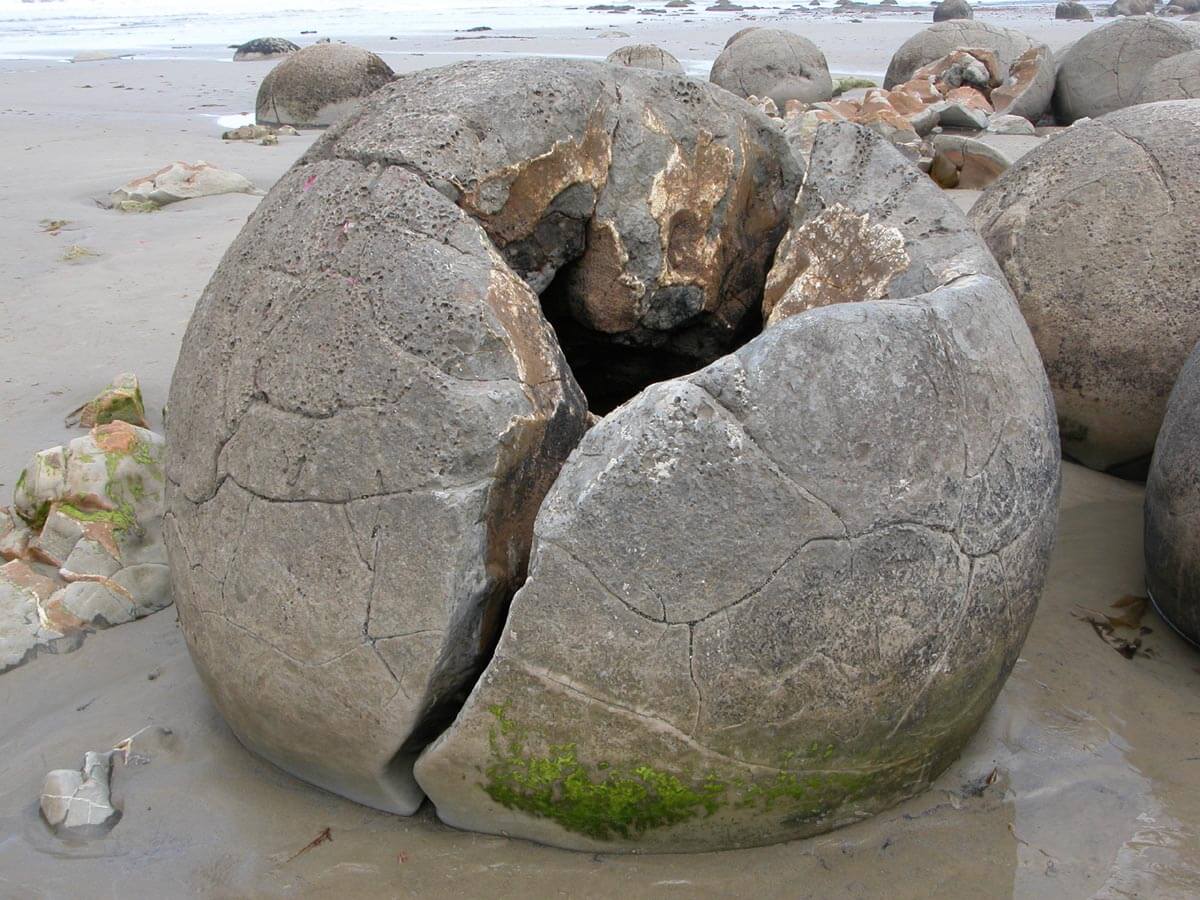
Hollow Boulder – a type of sphere boulder which has cracked and hollowed out, revealing calcite crystals.
[Omens, Passageways, Abyss]

- Sphere Boulders – large, spherical boulders, either isolated or in clusters, typically along beach. Caused by erosion of mudstone.
[Omens]
PART 13: ROCK SLOPES

- Ball and Pillow Structures – masses of clastic sediment appearing as isolated pillows or protruding ball structures. Results from massive physical shock (e.g. earthquake, volcano, or meteor) applied to unconsolidated sediment, causing lobes to arise or migrate. Found near combinations of sandstone and mudstone, or else limestone and shale.
[Omens]

- Chevron Folds – a structural feature with repeated v-shaped folded beds bearing straight limbs and sharp hinges. Developed in response to regional or local compressive stress, particularly with alternations of high-competence sandstones and low-competence shales.
[Omens, Passageways]
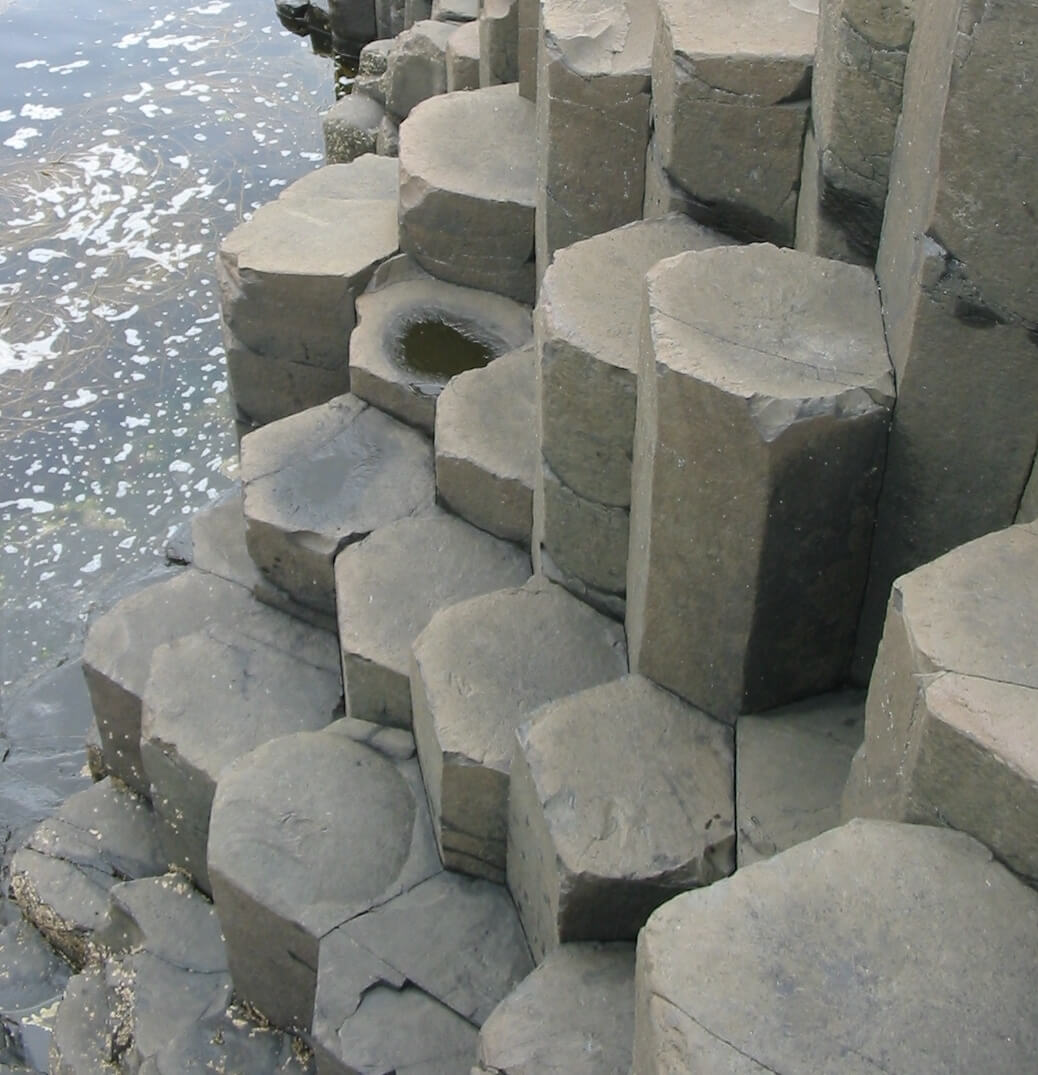
- Columnar Joints – a natural rock formation of interlocking polygonal prism columns of basalt, often alongside flat bases somewhat resembling cobblestones. Originates from ancient volcanic eruption.
[Omens, Passageways]

- Flared Slope – a rock-wall with a smooth transition into a concavity at the foot zone. Arises due to preferential weathering of the regolith or soil-covered base.
[Omens, Overlooks]

Mineral Terrace – a natural staircase arising from limestone deposited by hot springs, typically with a white, tan, cream-colored, or rusty appearance. An aboveground counterpart to the speleothems found in caves.
[Settlements, Omens, Overlooks, Passageways, Battlegrounds]

- Rainbow Sandstone – formations of sandstone slopes with diverse and vibrant colors, shaped by thousands of years of rain and wind.
[Settlements, Omens, Overlooks, Passageways, Battlegrounds]
PART 14: ROCK EXPANSES

- Desert Pavement / Reg / Serir / Gibber / Sai – stony plains or depressions covered by interlocking gravel like pebbles and cobbles, usually atop alluvial fans. Related to Hamada. Accumulates Desert Varnish.
[Omens, Abyss, Battlegrounds]

- Desert Varnish / Rock Rust / Desert Patina – orange-yellow to black coating on exposed rock surfaces in arid lands. Arises from a complex interplay of clay, iron and manganese oxides, wind, and dew.
[Omens]

- Limestone Pavement / Alvars – a natural karst landform consisting of a flat, incised surface of exposed limestone, with a topography of slabs and fissures and minimal or no soil. Formed by glacial retreat. Can become alvars, a sparse prairie habitat.
[Settlements, Omens, Passageways, Abyss, Battlegrounds]

- Mudcracks / Dessication Cracks – sedimentary structures formed as muddy sediment dries and contracts.
[Omens, Passageways, Battlegrounds]
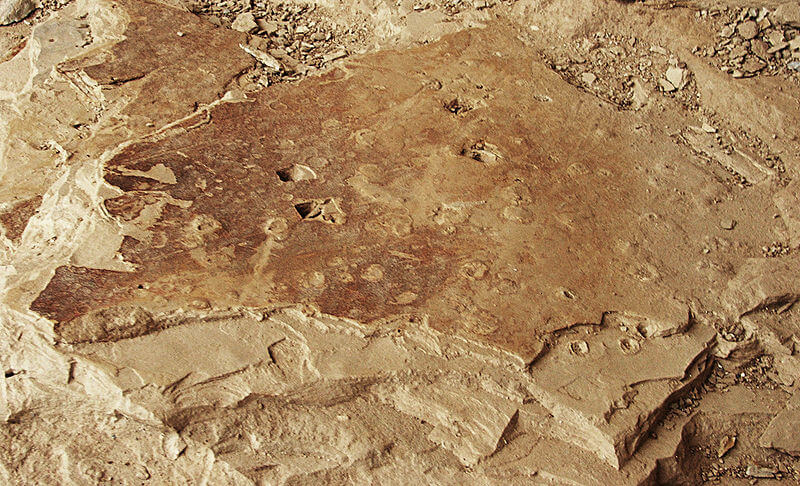
- Raindrop Impressions – a surface of small, crater-like pits with slightly raised edges purportedly resulting from the impact of raindrops on soft sediment.
[Omens]
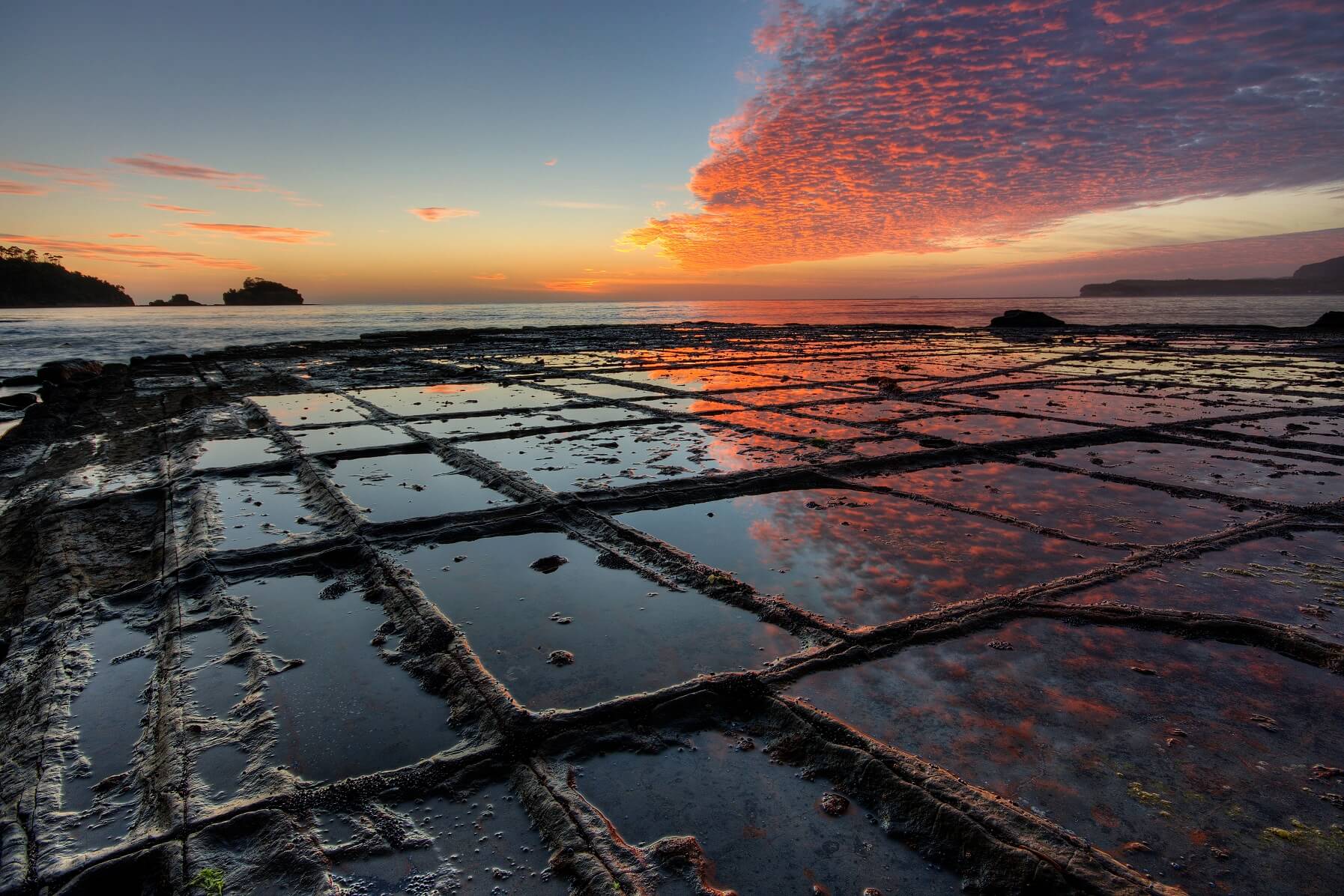
- Tessellated Pavement – a relatively flat rock surface subdivided by fractures into more or less regular rectangles, blocks, or irregular or regular polygons, in a mosaic pattern. Formed by various processes including differential erosion, joint weathering, lava cooling, and the shrinkage and cracking of fine-grained sediment.
[Omens, Passageways, Battlegrounds]

- Wavecut Platform / Shore Platform / Coastal Bench – a narrow, flat, patterned area often found at the base of a sea cliff or along the shoreline of a lake, bay, or sea, created by erosion.
[Omens, Passageways, Battlegrounds]
PART 15: ROCK INTRUSIONS

- Cone Sheet – a high-level igneous intrusion of subvolcanic rock, relatively thin inclined sheets shaped as downward-pointing cones, found in partly eroded central volcanic complexes. Circular to elliptical when viewed from above.
[Settlements, Omens, Overlooks]

- Dike – a sheet of rock formed in a fracture in a pre-existing rock body, often nearly vertical, of magmatic or sedimentary origin.
[Settlements, Omens, Overlooks, Passageways]

- Ring Dike – an intrusive igneous body, circular or oval- or arc-shaped, with steep contacts. Most likely arises from collapsed calderas.
[Settlements, Omens, Overlooks, Passageways, Battlegrounds]

- Roof Pendant – a mass of country rock projecting downward into and surrounded by an igneous intrusion. Formed as an erosional remnant.
[Omens, Overlooks, Passageways]
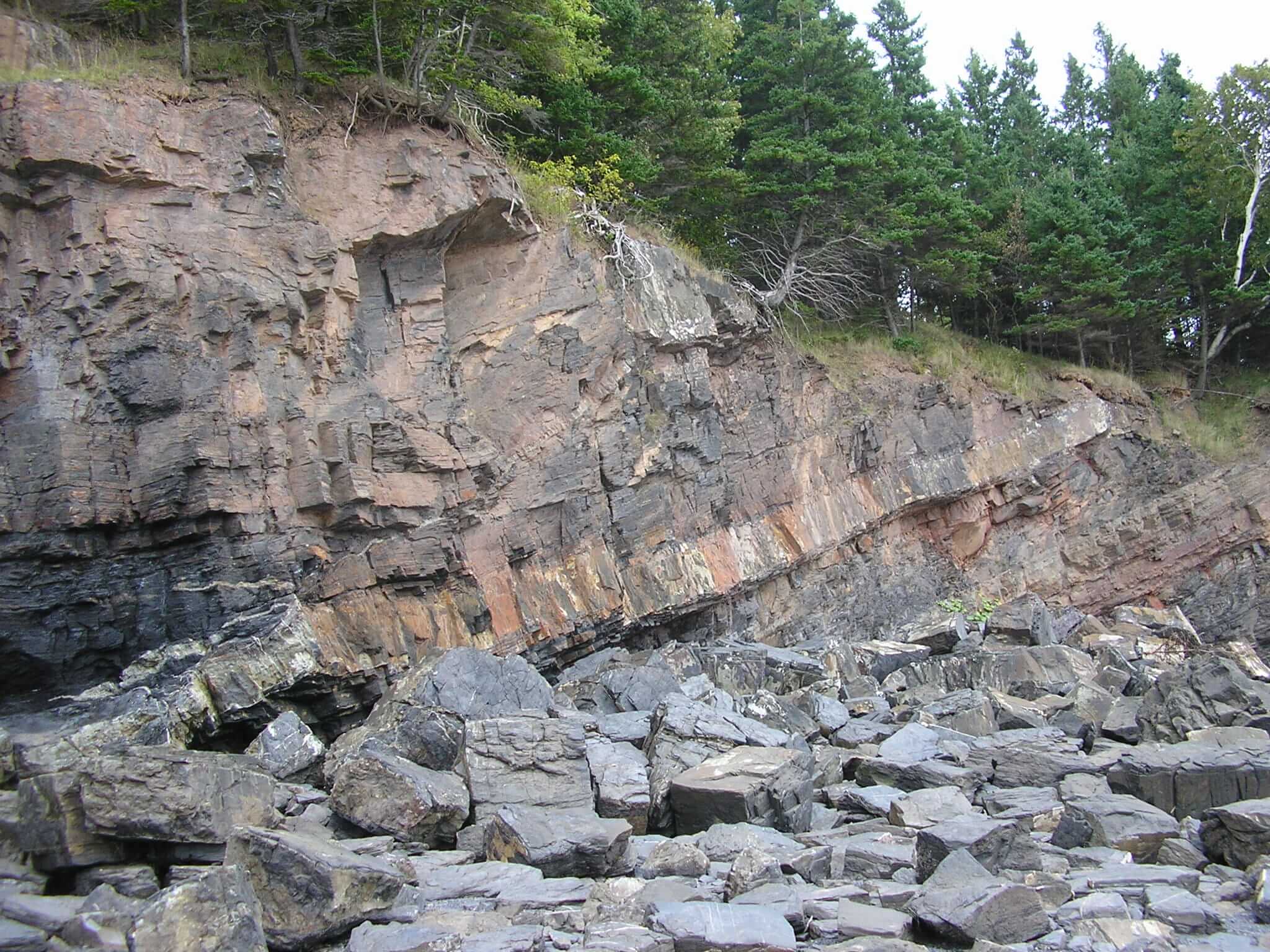
- Sill – a relatively thin, tabular sheet intrusion intruding between preexisting layers of sedimentary rock, beds of volcanic lava or tuff, or along the direction of foliation in metamorphic rock. Contrasts with, and fed by, dikes.
[Omens, Passageways]
PART 16: LOOK-ALIKES

- Anthropomorphic Rock – a rock structure resembling a humanoid creature.
[Settlements, Omens, Overlooks, Passageways]

- Botanomorphic Rock – a rock structure resembling a plant.
[Settlements, Omens, Overlooks, Passageways]

- Zoomorphic Rock – a rock structure resembling an animal.
[Settlements, Omens, Overlooks, Passageways]

- Cobblestone Rocks – a natural rock formation of interlocking polygonal prism tiles of basalt, with flat bases somewhat resembling cobblestones. Originates from ancient volcanic eruption.
[Settlements, Omens, Passageways, Battlegrounds]

- Lighthouse Rock – a natural rock structure resembling a lighthouse.
[Settlements, Omens, Overlooks]

- Organ Pipe Rocks – a natural rock structure resembling organ pipes, usually made of dolemite.
[Settlements, Omens, Overlooks]

- Stairway Rocks – a natural rock structure resembling a stairway.
[Settlements, Omens, Overlooks, Passageways]
FINAL THOUGHTS
I hope you enjoyed this fourteenth entry in my Mythic Ecology series! I look forward to continuing with it, I have some greater ambitions for developing this series into worldbuilding web tools. Give this a share if you liked it, and let me know in the comments if you have any feedback. I publish new posts on alternating Tuesdays. In the meantime, I post D&D memes and writing updates over on my site’s Facebook Page. Also, if you want to keep up-to-date on all my posts, check out my Newsletter Sign-Up to receive email notifications when I release new posts. A big thanks as always to my Patrons on Patreon, helping keep this project going: Adam, Alexander, Anthony, Benjamin, Chris, Eric & Jones, Evan, Geoff, Jason, Rudy, and Tom. Thanks for your support!


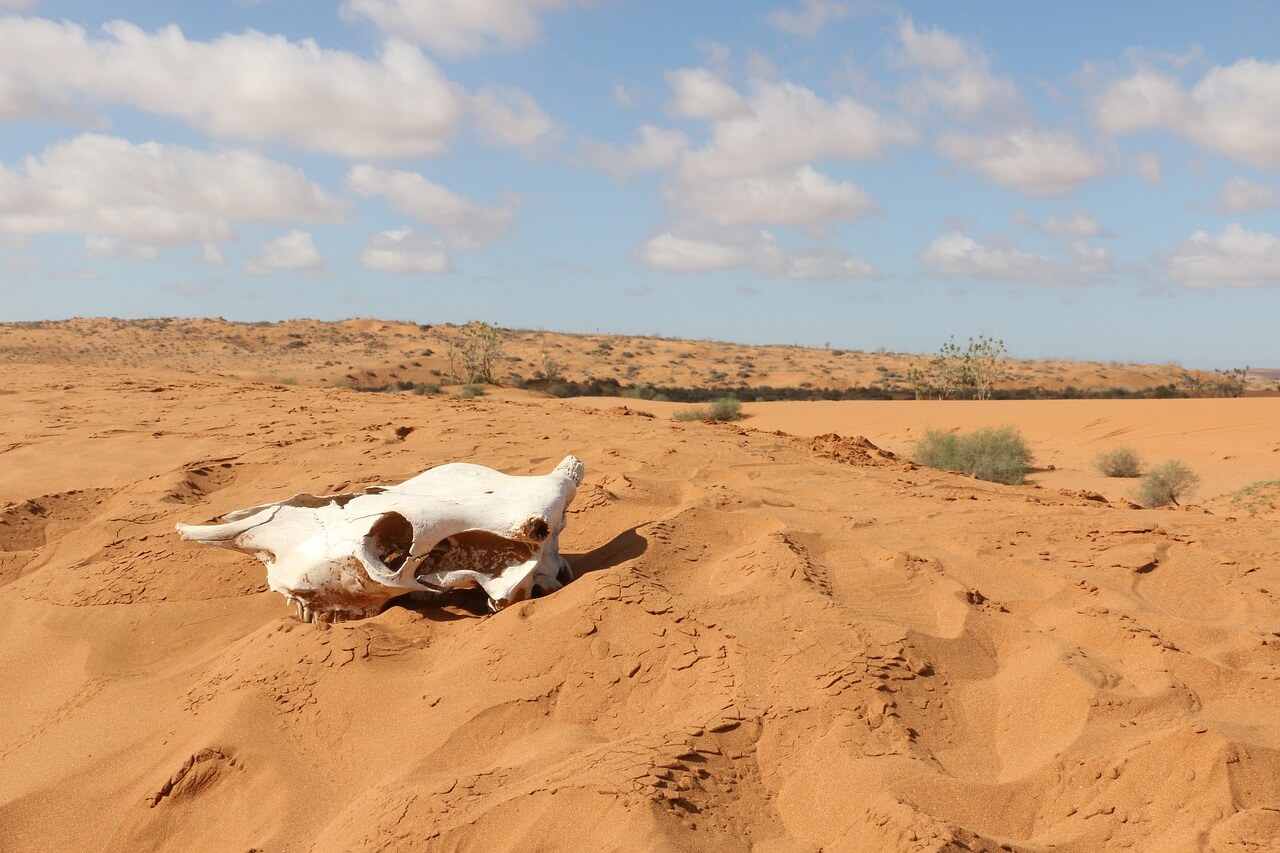



[…] worldbuilders to merge the realms of general myth and geomorphology. Last entry I took a look at Rock Formations. As I resume my journey sketching a framework for designing Yridia, my unique D&D 5e fantasy […]